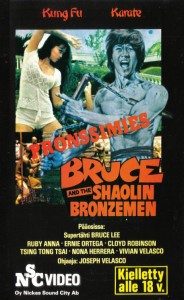
“Bruce and the Shaolin Bronzemen” Finnish VHS Cover
AKA: King Boxer 2
Director: Joseph Kong
Producer: Robert Jeffrey
Cast: Bruce Le (aka Huang Kin Long, Wong Kin Lung), Chan Sing, Lita Vasquez, Chang Lee, Ruby Anna, Cloyd Robinson, Nona Herrera, Vivian Velasco, Ernie Ortega, Tsing Tong Tsai, Angel Confiado, Ruben Ramos, Jimmy Cruz, Romeo Blanco, Joe Canlas, Ely Rufuerzo, Ed Ramos, Nanding De La Cruz, Bill Feijoo
Running Time: 78 min.
By Joseph Kuby
One film critic put it best when he said…
“With all the realism and reason in most today’s movies, this was briskly anarchistic in terms of boring rules of movie making.”
The credits verify this. We have a Perry Boy, Peedoy, D’vultures, Paeng Giant and SOS Daredevils (Filipino’s elite stunt team). There’s an actor called Chang Lee whose name is separated, giving the impression of two one-name actors.
King Boxer 2 seems to be a family affair. We have a trio of Velascos (Joseph, Vivian and Leonardo) and a quintet of Ramos’ (Ruben, Ed, Ever, Segundo and Amber). The disjointed nature of the production may as well have been due to a case of family feud or nepotism that may have occurred on set or off.
The plot is best described as a comedic version of The Gold Connection with everyone getting their necks deep into some priceless treasure all the while a mysterious hit man keeps a watchful eye. The stark contrast in those films is akin to comparing Jackie Chan’s distinctive (to the point of conflictive) 1993 efforts, City Hunter and Crime Story.
However, Bruce Le (a less talented Chinese Jeff Bridges) is no match for James Ho (or Dragon Lee for that matter) and for a Filipino actioner it could have done with Inosanto’s presence to seal the deal on the martial arts stakes. Given today’s climate when it comes to action cinema, I think the whole world could benefit from seeing an authentic Filipino action hero who reveled in the beauty of Escrima and the likes.
I admire Dan for helping Escrima and Jeet Kune Do gain more exposure in the West but his mastery of the martial arts, along with his knowledge of action directing, could have made him an ideal stunt coordinator for the Filipino film industry. His creative input could have easily bolstered the quality and boosted their place in world cinema and right now we would have decent quality films from the Philippines that would rival Ong Bak in their artistry. Daniel Inosanto could have done for the Filipino film industry what Bruce Lee did for the Chinese one.
That may seem like a bold comment to make but bearing in mind that Danny’s experience on Hollywood and Hong Kong features gave him a truly dual-world perspective, an advantage that not many people had back in 1982. As such, Filipino action cinema has been stunted in its growth as a powerhouse in action film-making. Filipino cinema, as a result, has been impeded with the cheap-as-hell tag.
As you can tell from what can be read above, this is a somewhat disappointing film which had the potential to genuinely put Filipino action movies on the market but alas this film is ruined with a loosely connected plot whose unfocused narrative makes the confusing mess of Enter the Game of Death look startlingly linear.
Both movies were made by Joseph Velasco (a.k.a. Joseph Kong Hung) but unlike the latter (which was the film he made prior to this), this one lacks any real sense of coherence despite the protagonist seeming to have more drive and purpose in his actions than in the previous outing. To say there’s plot holes would be a vicious understatement. You’d think bad decisions with the editing, rather than the script, are what caused these gaps.
Unlike their previous collaboration, there are no celebrity look-alikes. For instance, in Enter the Game of Death there’s a Caucasian man with dark hair and facial hair who looks like British comic Jimmy Carr and one of the black martial artists looks like Michael Winslow from Police Academy (I saw this film lately at a house party and one of my friends swears it’s him). Don’t let that put you off King Boxer 2. The film isn’t too far from the term “so bad it’s good.”
The director is the same dude responsible for Bruce’s Deadly Fingers (which boasted having Lieh, Nora and Bolo), Bruce and Dragon Fist, My Name Called Bruce (written by a Zackey Chan), Bruce and Shaolin Kung Fu, Enter Three Dragons (a.k.a. The Dragon on Fire which had Philip Ko, Bolo, Lee Hoi San and Bruce Lei or Dragon Lee) and Eye of the Dragon (a.k.a. The Ninja Strikes Back with Hwang Jang Lee, Casanova Wong, Bolo, Oddjob and Chick Norris).
He also helmed Return of Bruce (a.k.a. Boxing Brothers which also had Lo*) and Cobra (not with Sly Stallone but with Bruce Lei).
…and I’ve not even hinted at the two “special” Leesploitation chop-sockies he did. Hahahahaha!
As with a lot of martial arts movies, what you can always rely on to salvage a film with a weak plot are stellar action sequences but that depends on how good the action director is. Despite there being plentiful chances for culturally diverse slugfests, the film’s bouts of martial combat range from average to slightly above average barring one truly good duel that happens later on in the film. This happens during the course of the third act (in the beginning of said act) and not surprisingly it’s with another Chinese fighter but I’ll talk about that later.
On the plus side, if you want something that’s unusual to the point of being bizarre (if nonsensical) then you will enjoy watching the eccentricities that are inherent (if not wildly abundant) in this film. The best way to describe this movie is imagine watching a film that was a combination between Godfrey Ho (minus the ninjas) and Ken Russell.
There’s a surrealist tone to this film which makes the film wacky to the point of being incoherent. Not quite in league with Chu Yen Ping’s Fantasy Mission Force or Chan Mei-Kei’s The Eternal Evil of Asia but almost vying for the same level of attention. Honestly, after watching this movie, I’ve come to see Wong Jing as David Lynch.
Let’s see, this film has a bunch of henchmen who are dwarfs (one of whom fires a pistol as if it was a shotgun), a homosexual rapist, a tribe of sickle-armed dwarfs, a very hot snake fist-styled Filipino lady, a group of similarly clad dagger-wielding femme fatales, a murderous obese masseuse, a transvestite who’s accosted by Bruce Le and a team of Shaolin Bronzemen. After all, this was made by the same team who brought us Clones of Bruce Lee. However, the film is misleading with its alternate title of Bruce and the Shaolin Bronzemen as they’re only featured in one scene.
Equally dubious is the title King Boxer 2 as this has nothing in common with Lo Lieh’s breakthrough film. Actually, given the nature of Lo Lieh’s appearance in Big Boss 2**, it would have arguably been more fitting if these two films switched titles. These films would probably have benefited more in reception, especially in the case of Le’s flick since if people can confuse Chinese with Japanese then they can confuse Filipinos with Thais.
With that said, there are a few scenes which seem similar to The Big Boss with one of the antagonists taking pleasure in watching their hired men spar with each other as well as joining in for a martial arts demonstration. Even some dialogue at the end recalls something Lee uttered in the finale of said film.
Notwithstanding possibly intended allusions to Bruce’s first action film, it’s a shame that there weren’t that many Bruceploitation films that capitalized on The Big Boss. The grisly nature of the film’s violence coupled with the prostitute angle was enough for exploitation movie moguls everywhere to expound upon. There was never a Bruceploitation film that truly quenched the thirst of porn pundits and fed the hunger of bloodhounds. Had there been so, exploitation cinema junkies would have sought highly after these films regardless whether they liked martial arts or not.
Opportunities were also missed on directly cashing in on Enter the Dragon. Given the plot elements of escorts and captives, filmmakers could have remade Enter as a “women in prison”*** movie with tons of sexploitation and lots of multi-ethnic diversity to entice global audiences. If Wong Jing was a director in the ‘70s, he would have explored such a concept. Jingie is an exploitive genius who would have given us enough sex, violence, juicy foul language and ‘70s cultural tidbits to satisfy the most ardent of grindhouse fans.
Back to this movie, which should not be confused with Treasure of Bruce Le (directed by Joseph Kuo****), it is a fairly middling affair with slightly meandering direction in light of both characterization and action. If there had to be one film that is required to be watched with friends and consumed substances, in order to be fully enjoyable and not utterly pointless, then this is the one. Whilst the film occasionally shines with inspired moments, it just plods along aimlessly in search of meaningful direction.
Looking back in retrospect, the main deficiency here is the dubbing. No one is a native English speaker so it’s hard to fully immerse ourselves with the interaction that exists between the characters. The dubbing is notable for having artists whose native language is obviously not English. Everyone sounds Mexican. Bruce Le sounds as if he’s dubbed by a Spaniard who sounds like Antonio Banderas. The guy who does the voice-over for Bruce pronounces uncle as “ancel.”
Another issue with the dubbing is that there’s moments when someone is speaking but nothing is heard, something that becomes quite apparent during the fight scenes where the usually present war cries are fairly absent (this happens with other kinds of sound effects during some of the scenes). This makes for an emotionally detached experience, though (save for a few okay actors) the sub-par acting on offer belittles any substantial levels of engagement the filmmakers were aiming to derive from the audience.
Then again, the dubbing could have thwarted some decent voice acting since I’ve always believed that if an actor is limited facially, they can deliver vocally (take for instance John Hurt in The Elephant Man). Maybe someone felt having foreign dubbing made it realistic but that is a jarring thought to consider since the problems of comprehending the dialogue diminish any well intentions of the sort.
The post-production team could have at least attempted in getting an actor like James Hong (who had lent his talent to several characters for the Li feature Exit the Dragon, Enter the Tiger). Gone are voice artists who sound like celebrities (like the Sean Connery soundalike for the villain in Interpol). No longer do we have dubbers who sound like John DeMita (Li’s role in New Game of Death) or Jonathan Frakes (Lung Fei’s villain role in New Game of Death).
George Lucas once said that film is 50% sound and I think this film displays a stark contrast between quality of dubbing and scoring. King Boxer 2 is testament to how much a decent quality soundtrack can enhance the experience of a film. What the film may lack in its visual components, it certainly does not lag with its audio composites. There are some rousing moments of orchestration which help make the film more achieved than it deserves (the accomplished fight scene with the Chinese hit-man being the highlight).
We’re treated to some classic funkadelic beats (‘70s bass lovers will get a kick outta this flick) and one rip-roaring fight scene with a Filipino gang near the beginning is a notable example. Of course, like a lot of the Hong Kong films during the period, this film contrives some cues from other movies (The Sand Pebbles must have been a huge hit in Hong Kong because its music was ripped off majorly for Jackie Chan’s Dragon Fist).
On the surface, the film seems to have the ingredients of a classic Bruceploitation film but it never really gels those ingredients together in a truly cohesive whole. It starts off like a traditional Kung Fu movie with some guy showing off his repertoire of movements. The only thing here being remotely different is the aspect of lighting with Bruce Le being illustrated fairly vibrantly in a red coat of light in front of a pitch black background (you gotta dig the contrast) then we get taken to some scenic agricultural setting where Bruce is training (with some of the most over the top sound effects ever heard).
Next we see Le trying to survive in the wilderness by hunting for fish and using darts to snatch melons from trees. We then come across his martial arts master in ancient garb and we get the impression this is some period tale but then afterwards we get taken to a scenario with thugs in contemporary attire. In any other movie, this would have been seen as defying audience expectation (since it is common for Chinese people to wear ancient robes in a modern setting e.g. the Waise Lee movie The Cat*****). In this movie, it’s just an example of the filmmakers deciding to make up things as they went along.
Le’s character is questionable morally as when the thugs attempt to rape a woman, he doesn’t do anything until they accidentally kick his pot of cooked fish. There’s nothing wrong with having protagonists whose agendas are with shades of gray (like Eastwood’s in the Dollars trilogy) but there doesn’t seem to be many plot points which allow for these filmmakers to explore the possibility of having a morally ambiguous “hero” (either that or they decided to drop the act after failing to come up with more angles on this). Once more, the would-be rape victim tries to kill Le moments later!
After foiling an ambush attempt by some random goons, Le encounters a mysterious martial arts expert played by Cheung Lik (who played the nunchaku exponent in Enter the Game of Death). Cheung was the fight choreographer for both this and Enter the Game of Death. The problem with this film is that during the group conflicts, it’s more obvious than ever that the stuntmen are just waiting to get hit than to be giving the impression that they’re that involved in the fight.
Throughout a lot of these fights, they come off as referees overlooking the action before anticipating in the combat. The filmmakers of this could have learned a lot from Last Fist of Fury from the composition of similar-themed fights. Despite this, both movies share scenes involving one of the protagonists being entangled in rope during a melee.
Some of the humour in the feudage helps to give the film an endearing touch even if some of it is quite hokey (if not ho-hum), namely when one of the gang leaders punishes a fellow hooligan by pulling out some of his facial hair.
Bruce Le’s vest, in some scenes, reads Saplot which is also the name of a feature-length presentation sex drama. Which reminds me, King Boxer 2 could have done with some nudity and porn. Given the randomness of the movie, the producers really missed out on going full-tilt with the exploit-everything angle. Nothing beats a good ol’ fuck and fight flick.
The actress who plays the villainess is Lita Vasquez who was thought of as the Philippines’ answer to Angela Mao. Lita can be seen in the Filipino cult classic Darna and the Planet Women.
The scene with the miniscule tribemen was, no doubt, inspired by the popularity of Weng Weng whose major claim to fame was the Bond spoof For Y’ur Height Only******. Weng had fought Lita in The Impossible Kid which was released one year after For Y’ur Height Only.
Yukari Oshima would be the next big female action superstar for Filipino audiences, although her status is surpassed by actress Vilma Santos who is seen as the Filipino Meryl Streep (conversely yet curiously, Cynthia Rothrock’s popularity in Jakarta was such that she was, oddly enough, viewed as a martial arts Meryl Streep).
No Bruceploitation movie could be complete without the requisite humour, even if a lot of it is unintentional (save for a Filipino equivalent to the type of Waylon Smithers-esque role usually reserved for Lee movie expat Wei Ping Ao). A sign on the door of a sauna (for men) reads ‘keep smiling’ (eerily unsettling given the nudity on display). One of the female protagonists informs Le that one of the crooks is as big as an elephant and when Le is at an amusement park, the director attempts to make the statues of creatures look scary but this would only work in a film like Jurassic Park. Here, it comes off as tawdry.
Rape scenes are never intended to be funny (unless you’re Wong Jing) but in this movie some Filipino thugs try to steal this fat guy’s big bowl of white cream (innuendo unintended) and one of them tries to undress him, causing the chubby guy to moan like a puppy dog as he yearns for his food. If Wong Jing was behind the camera (and left to his devices) this would be on par with his scripted James Ho movie, The Lama Avenger (o.k.a.******* The Three Avengers) which, believe it or not, isn’t as tacky as one may think.
A “poignant” scene takes place nine tenths into the film but rather than being tear-jerking, we’re succumbed to laughter as we see Bruce Le became Bruce Banner. Heheheheheheheheheh!
The brawls presented are literally a case of hit and miss but one fight that’s likely to excite viewers is what should have been the true denouement given the limited skills of Lita and the element of suspense that the film was trying to generate with the mysterious Chinese fighter.
The martial joust illustrates what we’re missing in the other fights: a sense of urgency and a feeling of danger. Mr. Lucas once said that a film is only as good as its villain and throughout the majority of this movie we never get the impression that Le is closer to the threshold of death. This is only hinted at with the premise of each fight rather than explored to devastating effect.
Le is engaged in a fast-paced battle of wits involving having to constantly change his style to jinx the concentration of the hired killer. Le and Lik constantly utilize different styles of Kung Fu, back and forth, in a way that makes other Kung Fu films look stilted and formal in their progression of styles. Le uses an assortment of leopard, dragon’s tail, snake, crane and tiger techniques to combat whatever Lik throws at him. There are parts where they even have to engage in the more conventional fisted combat just to gain an advantage. Lee would be impressed.
Describing the structure on a basic chronological format is fairly daunting, let alone describing the way they employ their techniques. Simply put, the duel serves as a master class seminar in how to counteract the other duelist’s style. It would have been the icing on the cake to have had some mantis and eagle (thumb, index and middle fingers) stylings going on. Having some monkey and panther-fist (middle knuckle raised) shenanigans would have been the cherry on top.
The unconventional conclusion of this bout may have motivated the development for the one between Jackie Chan and Don Cheadle in Rush Hour 2. The music even sounds similar but then that’s probably just me.
The finale is pretty exciting for what it is in theme although it’s kinda uneven in that the very final fight scene doesn’t live up to what preceded it: a series of progressively enthralling fight sequences. We have Karatekas with blades, Karatekas with poles and some Escrima exponents thrown in for good measure. To be honest, Le fought so many people that I think I may have left out something.
Now, if we had Dan Inosanto leading a pack of Escrima-styled cronies against Le then this could have rivaled James Ho’s Chinese Stuntman or even Bruce Lee’s Game of Death for that matter. As is the case here, the premise for the third act never really delivers in a way it should, making the likes of Enter the Game of Death look like Tower of Death. Which is all the more insulting to all concerned when you consider that Enter the Game made New Game of Death look like the original Game of Death.
I wonder how big this film would have performed at the Filipino box office had Weng and Dan appeared in it. Perhaps, Dan was offered to join but was weary of Le and Weng may not have been content at doing a cameo as a Filipino Ewok (he still could have played Agent 00 gunning down would-be gunners attempting to foil Le’s path to obtain justice).
Some gaffes can’t be ignored though. For instance, there are two topless guys who are waiting to pounce on Le in some hotel lobby but the receptionist only notices them when they start fighting (bearing in mind that one of them is standing very near her). Le hits a guy’s thigh but the guy reacts like his extended mushroom and bag of prunes (*cough* *cough* *nudge* *nudge* *wink* *wink*) have been tremendously whalloped.
Some of the kicks don’t look effective since they obviously miss their intended target. Even if people don’t want to get hit, there are ways of obscuring these things with camera positioning but thankfully this never becomes too frequent.
When Le defends himself against the masseuse, she actually smiles after she gets hit. This is an inadvertent example of someone reverting from sadism to masochism. Add a few more techniques at the proverbial hands of Le (as well as some suggestive grimaces) and the term sadomasochism would spring to mind too. The director is prone to some bizarre moments of creativity so maybe Le should have fist-fucked her too.
The villainess of the piece tries to invite Le for a swim but even in the shallow end of the beach she struggles. Despite having reasons to distrust her, he helps her anyway only to be attacked then later on he kisses her like as if the whole thing was just a game of hard to get. When Le fights the first wave of Karatekas, they scatter away for some reason (leaving another group to get wiped out) and then they come back again. It’s like the director had suddenly found a way to extend the finale mid-production.
A good example of the lousy film-making apparent is that in one shot we can see the reflections of the film crew in Le’s shades. Thankfully, we don’t get too many shots like this otherwise this film would be plagued in its attempts to take the viewers to a world that seems to exist outside a filmic environment.
This film is so flawed that it makes Last Fist of Fury look like the work of Akira Kurosawa. Yeah, it’s that bad. Writing and directing mean nothing if the lead actor is not capable. Bruce Le, at best, is an average actor who manages to make the minimalistic Chuck Norris look like a subtle method actor. At worst, Le is a bad actor who can convince movie goers that Michael Wong can evoke the presence and mood of Anthony Wong.
Seriously, Le lacks the expressionistic texture that separates good actors from bad actors. Given the animated nature of some of the other talents Kung Fu cinema had to offer, Le can not hold one’s attention when he’s not in action. Le exhibits little of the charisma and charm Li effortlessly conveyed. He also makes Dragon Lee look like Jason Scott Lee.
Like what Michael Caine said, an actor is always thinking if not talking. Unlike James, we don’t get to see much introspection from Le. Maybe it’s the lack of opportunity to explore facets of emotion but Le is as one dimensional as they come. If Ho was in this movie, this would have been an above average feature if not an entirely good one (like the offbea Bruce Li in New Guinea – also directed by Joey Kong). As it stands, this is quite a bad film with redeeming qualities that stop it from being deemed as terrible.
In spite of this, I feel reluctant in calling this a terrible film since it would be an insult to those who’ve seen worse films. This film, whilst not being consistent, is at least unpredictable and manages to deviate from an unbearably slow pace considering its script seems to have been improvised on set. There are some nice scenic locales too.
Even if the film was without merit, watching bad movies can be good so as to help you be aware of what it means to make a good film and certainly watching terrible movies can make you more aware of the overall standards.
On the whole, this film is worth checking out if you’re looking for a film that’s out of this world. It’s not the worst Bruceploitation movie but nowhere near the best, not by a long shot.
The UK DVD, courtesy of 23rd Century, is missing a good part of the Filipino samurai segment where Le gets cut and uses the nunchaku to bring down the Karatekas. The French title for this film is Le Vainqueur which means The Winner.
Joseph Kong Hong’s filmography probably makes Lo Wei look like Chang Cheh but he’s not without his credentials. Yuen Woo Ping’s second job as stunt coordinator was for Joseph’s directorial debut Tough Guy (starring Chan Sing, Fung Hak On and Mars). Ping would go on to work with Joey on Tiger Force (starring Michael Chan Wai Man, Chan Sing and Jimmy Lee Fong). His last effort with Lo Lieh was The Furious (not to be confused with the Dragon Lee movie of the same name).
His last directorial credits were Thundering Ninja and Out of Danger. Joe’s last movie (as producer) was Black Spot, a film which would motivate the team responsible for Police Story 3: Supercop to pull ideas from it (in story and action). To speak of the devil, Jackie also reinvented the playground fight from New Game of Death for Police Story 2.
As much as Chan criticizes the Bruceploitation (or Bruce-spoof) franchise, it obviously left him an impression (intentionally or subconsciously) to the point of lifting the bus fight gag from Golden Sun (a.k.a. Bruce Lee, We Miss You) for the first Police Story. Criticize he may, Jackie can’t deny the importance these JKD rip-offs had.
Call them purid, full-length presentation, comedy sketch-shows or trash-taste crap-fests but if it weren’t for the Bruceploitation sub-genre, Hong Kong action cinema would have not maintained the popularity it did in the West. It helped bridged the gap between Lee and Chan in terms of sheer commercial momentum.
Many would like to think that these films failed in Hong Kong but if they were well and truly turds that stank up theaters, the local filmmakers wouldn’t have felt inclined to make dozens of them. Exploitation cinema doesn’t get more exploitive than capitalizing on people wanting to see their deceased hero. Critically abysmal? Yes. Commercially dismal? No.
At the end of the day, if you wanna watch a Filipino Bruceploitation actioner that delivers and doesn’t disappoint then check out Chaku Master which stars Bruce Ly (he sort of looks like a Filipino Ngai Sing/Collin Chou). One example of classic humour from that film is the uncanny usage of symbolism during an oral sex sequence. Coincidentally, both flicks offer some of the same locations such as the female villain’s Manilla villa. Heck, Le’s appearance in the Bollywood action flick Katilon Ke Katil, starring Dharmendra, is worth watching than this.
In retrospect of how his career turned out, Bruce Le should have concentrated on making either American or Hong Kong movies than working in the Philippines which is seen as the hell to Hong Kong TV’s purgatory for action movie stars.
After making this movie, Bruce Le worked on the fight scenes for a Chansploitation film called Fearless Hyena 3 starring Jacky Chen Shao Lung (which had Bolo Yeung). Bruce would then be choreographed in a film called Treasure Hunters by no other than Bill Yuen Biao (this shouldn’t be confused with the Wong Jing scripted Shaw Bros. movie which starred Al’ Fu Sheng, Wang Lung Wei, Gordon Liu, Lau Kar Wing and Wilson Tong).
With hindsight, this film seemed to inspire Sammo Hung for some of the comedies he made with Jackie Chan and Yuen Biao. If you were to watch this flick followed by Twinkle Twinkle Lucky Stars and Winners and Sinners, you’ll see how he incorporated certain elements into better movies. It’s a shame no one started up a Hungsploitation genre, get some Japanese fella and rename Sumo Hung. Hey, even Nora Miao had an imitator – Cora Miao. Hong Kong favourite Cheung Hok Yau was named after Jackie.
The gag of having an action sequence take place at a gambling horse den seems to have influenced Joe Cheung for the finale of Flaming Brothers (with firepower replacing fist- and feeticuffs).
You know, for a critically maligned sub-genre, Bruceploitation offerings have had a fair amount of influence. New Game of Death motivated John Woo with using freeze-frame techniques to emphasize dynamic parts of his films and Storming Attacks (Image of Bruce Lee) was given a sly nod by Wong Jing for his overlooked 1989 action comedy classic, Crocodile Hunter (starring Andy Lau). Then there is the correlation that occurs between The Dragon Lives and Dragon: The Bruce Lee Story along with others.
As for Filipino cinema, it should at least be noted for making a name out of this particular Hong Kong movie star.
* How Lieh avoided the label “Lo budget Lieh” is anyone’s guess since his willingness to appear in tacky dreck (like Fist of Fury 2) almost tarnished his respectable reputation.
** Not to be confused with the Dragon Lee movie of the same title which was alternatively titled Dragon Bruce Lee 2.
*** Usually referred to as WIP.
**** Like the American cartoon, Ed, Edd and Eddy, it would have been canny to have had a production with Koo, Kuo and Kong. Joseph Koo being a film score composer as avid Bruce Lee fans would attest.
***** Which boasts one of the greatest fight scenes ever depicted on film…between a mutt and a feline, it has to be seen to be believed (the action director was Philip Kwok a.k.a. Kuo Chui who also appears in the film).
****** Otherwise known as.
******* Peculiarly, James Ho had done a film prior to Weng’s cult classic which had him up against Oddjob and a mini-me variation of him.
Joseph Kuby’s Rating: 5.5/10

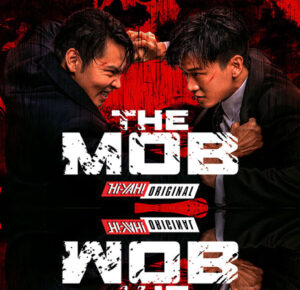
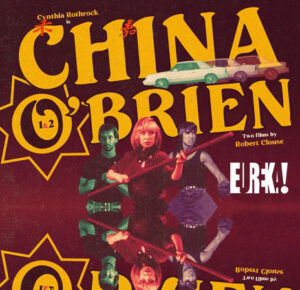
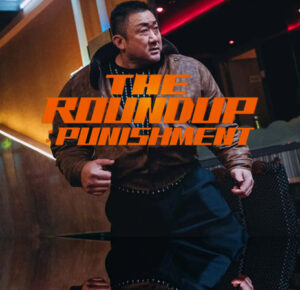
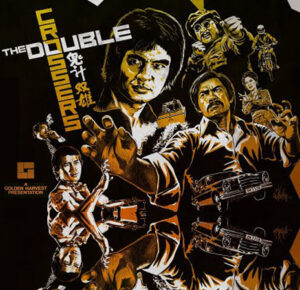
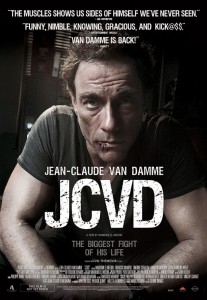
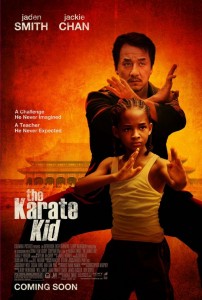
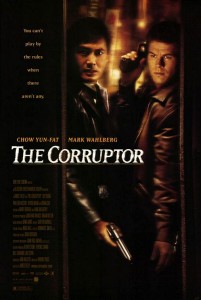
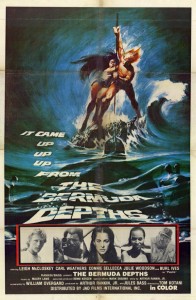

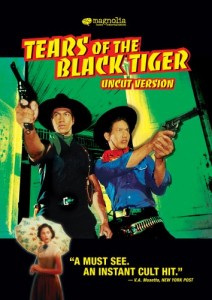
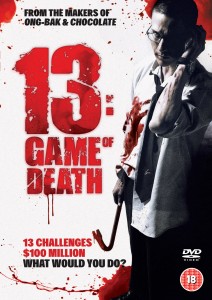
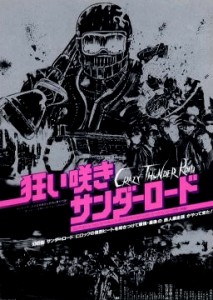
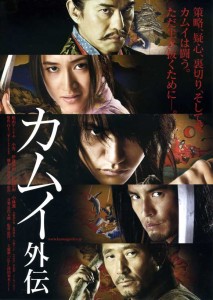
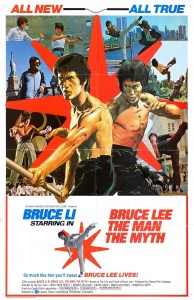
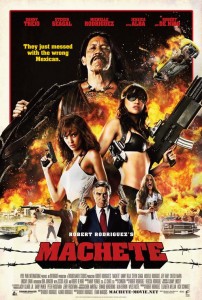
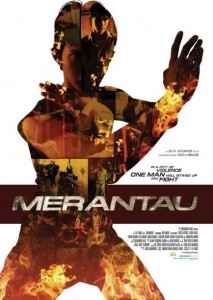
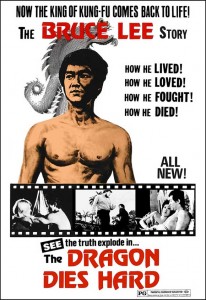

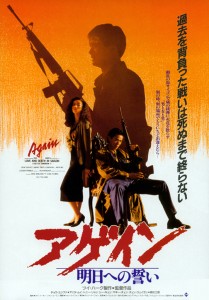



Be the 1st to Comment